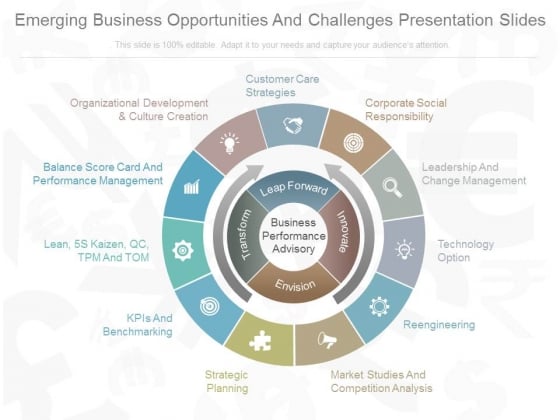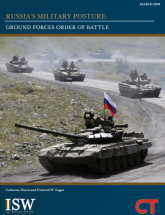Tariff Uncertainty Drives U.S. Businesses To Cut Costs

Table of Contents
The Impact of Tariff Uncertainty on Supply Chains
Unpredictable tariffs significantly disrupt established global supply chains, leading to delays, increased costs, and a general sense of instability for businesses.
Disrupted Global Trade
The constant threat of new or altered tariffs forces businesses to constantly reassess their supply chain strategies. This unpredictability leads to several critical issues:
- Increased shipping times: Uncertainty causes delays as businesses wait to see how tariffs will affect their import costs before committing to shipments.
- Higher transportation costs: Businesses may need to explore more expensive shipping routes to avoid tariffs or utilize expedited shipping to minimize delays, drastically increasing transportation costs.
- Reliance on less efficient alternative suppliers: Tariffs can render previously cost-effective suppliers unviable, forcing businesses to seek alternative sources, often with higher costs and longer lead times.
For example, consider the impact on a small apparel company reliant on fabrics sourced from China. Sudden tariff increases forced them to scramble for alternative suppliers, resulting in a 20% increase in material costs and a three-month delay in their next collection launch.
Reshoring and Nearshoring Initiatives
To mitigate tariff risks, many companies are adopting reshoring (moving manufacturing back to the US) and nearshoring (moving it to nearby countries) strategies. While this offers potential long-term benefits, it presents significant challenges:
- Increased initial investment: Setting up new manufacturing facilities domestically or in nearby countries requires substantial upfront capital investment.
- Potential benefits of reduced transportation costs and lead times: This can ultimately offset some of the increased initial investment, improving efficiency and reducing vulnerability to future tariff changes.
- Challenges associated with reshoring/nearshoring: Finding skilled labor, navigating different regulatory environments, and managing increased logistical complexities are significant hurdles.
Data from the Boston Consulting Group indicates a significant rise in reshoring and nearshoring activities in the US, reflecting the growing concerns over tariff uncertainty and supply chain resilience.
Cost-Cutting Strategies Employed by U.S. Businesses
Faced with increased costs and uncertainty, US businesses are implementing various cost-cutting measures, often with far-reaching consequences.
Automation and Technological Investments
To reduce labor costs and improve efficiency, many businesses are investing heavily in automation technologies:
- Robotics: Automated manufacturing processes minimize reliance on manual labor and improve production speed and consistency.
- AI: Artificial intelligence is being used to optimize supply chains, predict demand, and reduce waste.
- Improved software for inventory management: This helps streamline operations, reduce storage costs, and minimize stockouts.
Companies like Amazon have been pioneers in implementing extensive automation across their operations, demonstrating the potential cost savings and efficiency gains.
Reduction in Workforce and Outsourcing
The pressure to cut costs has led some businesses to reduce their workforce or increase outsourcing:
- Layoffs: Businesses facing significant cost increases may resort to layoffs to reduce their labor expenses.
- Hiring freezes: Many companies are delaying or halting hiring to control payroll costs.
- Increased reliance on contract workers: This allows for greater flexibility and reduces long-term employment commitments.
However, these measures have significant ethical implications and can negatively impact employee morale and long-term business prospects.
Price Increases and Reduced Product Variety
Many businesses are passing increased costs onto consumers through higher prices or simplifying their product offerings:
- Impact on consumer spending: Price increases can lead to reduced consumer spending and potentially harm the overall economy.
- Potential loss of market share: Businesses that increase prices too aggressively may lose market share to competitors who are able to absorb the increased costs more effectively.
Data from the Bureau of Labor Statistics reflects a correlation between tariff increases and inflation, impacting consumer purchasing power.
The Broader Economic Consequences of Tariff Uncertainty
The impact of tariff uncertainty extends beyond individual businesses, significantly affecting the overall economy.
Reduced Economic Growth
Tariff uncertainty creates a climate of instability that negatively impacts economic growth and investment:
- Reduced consumer confidence: Uncertainty about future prices and availability of goods can lead to decreased consumer spending.
- Decreased business investment: Businesses are less likely to invest in expansion or new projects when facing uncertain trade policies.
- Impact on GDP: The combined effects of reduced consumer spending and business investment can significantly impact overall GDP growth.
Economic forecasts often reflect a downward revision in GDP growth projections during periods of high tariff uncertainty.
Increased Inflation
Tariffs directly contribute to inflation by increasing the cost of imported goods:
- Impact on purchasing power: Higher prices erode consumers' purchasing power, reducing their ability to buy goods and services.
- Potential for wage stagnation: If wages don't keep pace with inflation, consumers' real income decreases, potentially leading to social and economic instability.
Inflation data consistently shows a positive correlation between tariff increases and the rise in consumer prices.
Conclusion
Tariff uncertainty presents significant challenges to U.S. businesses and the broader economy. The disruption of supply chains, the need for drastic cost-cutting measures, and the resulting economic consequences underscore the importance of stable and predictable trade relations. From reshoring initiatives to automation investments, businesses are actively seeking solutions, but the underlying issue of tariff uncertainty remains a major obstacle to sustainable growth. Understanding the impact of tariff uncertainty is crucial for navigating the current economic climate. Stay informed and demand policies that foster a more stable trade environment for U.S. businesses.

Featured Posts
-
 Identifying Emerging Business Opportunities A Geographic Overview
Apr 29, 2025
Identifying Emerging Business Opportunities A Geographic Overview
Apr 29, 2025 -
 Minnesota Snow Plow Name Winners Announced
Apr 29, 2025
Minnesota Snow Plow Name Winners Announced
Apr 29, 2025 -
 Technical Glitch Forces Blue Origin To Abort Rocket Launch
Apr 29, 2025
Technical Glitch Forces Blue Origin To Abort Rocket Launch
Apr 29, 2025 -
 The La Palisades Fires A List Of Celebrities Who Lost Their Homes
Apr 29, 2025
The La Palisades Fires A List Of Celebrities Who Lost Their Homes
Apr 29, 2025 -
 Ambanis Reliance Strong Earnings Signal Positive Outlook For Indian Markets
Apr 29, 2025
Ambanis Reliance Strong Earnings Signal Positive Outlook For Indian Markets
Apr 29, 2025
Latest Posts
-
 Russias Military Posture A Threat Assessment For Europe
Apr 29, 2025
Russias Military Posture A Threat Assessment For Europe
Apr 29, 2025 -
 Gazas Humanitarian Needs The Urgent Call To End Israels Aid Blockade
Apr 29, 2025
Gazas Humanitarian Needs The Urgent Call To End Israels Aid Blockade
Apr 29, 2025 -
 Understanding Russias Military Strategy And Its Impact On Europe
Apr 29, 2025
Understanding Russias Military Strategy And Its Impact On Europe
Apr 29, 2025 -
 International Condemnation Of Israeli Aid Ban As Gaza Suffers
Apr 29, 2025
International Condemnation Of Israeli Aid Ban As Gaza Suffers
Apr 29, 2025 -
 Humanitarian Crisis In Gaza Demand For Israel To Lift Aid Restrictions
Apr 29, 2025
Humanitarian Crisis In Gaza Demand For Israel To Lift Aid Restrictions
Apr 29, 2025
